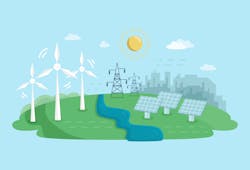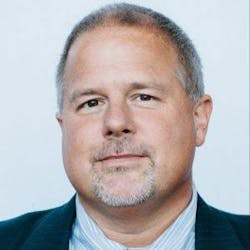The adage “think globally, act locally” was coined in 1915 by Scottish planner and conservationist Patrick Geddes, who inspired impactful transformation for many communities in his time. Since its inception, Geddes’ concept has been successfully applied to many industries and strategies — and addressing climate change is no exception. Indeed, local choices in favor of sustainability can have a global impact.
Lowering barriers to a greener future
In order for communities to take full advantage of the sustainable energy options available to them, the technical, institutional, financial and even stakeholder barriers to entry must be addressed first. Although installing a microgrid seems like a daunting task for an individual home or local community, the truth is microgrids are an accessible option for many.
However, it’s important to understand whether a microgrid is the best option and if it ensures the best return on investment. There are preliminary assessments and calculations, such as sizing studies and equipment specifications that can help determine the best options and address many of those aforementioned challenges. Using these assessments helps microgrids unify distributed energy resources like solar, battery, electric vehicles and even diesel generators. On top of that, when equipped with cloud-connected software, modern microgrids can even take the guesswork out of maintenance and maximize efficiency. To overcome the financial hurdle, an energy-as-a-service model can help easily convert buildings and communities to renewable energy through a cost-effective, resilient and sustainable energy approach, with no upfront capital expenses or operational risks.
Green building infrastructures help fight climate change
Taking advantage of existing resources, or even other microgrids, allows communities to begin reaping the financial and sustainability benefits sooner. A recent example of this is a municipality in Maryland that plans to set up a bus depot microgrid that includes electric bus chargers for its ridesharing fleet.
Leveraging its own power supply, the community can avoid utility demand charges and dictate charging schedules to increase efficiency. Added resiliency for the bus service during any long-term power outages, including severe weather events or utility grid outages, is an added bonus.
If your local community doesn’t have a microgrid, there are other ways to leverage sustainable residential technology without homeowners having to shoulder the burden. The Sundance at Park Circle community outside of San Diego, California, is addressing this problem by building homes with green technology from the start — complete with groundbreaking smart home technology to address energy control and resiliency.
Decarbonized cities are economically advanced — and resilient — cities
Extreme weather events, like persistent wildfires in California and plummeting temperatures in Texas, continue to chisel away at power supply dependence. With frequent outages and skyrocketing energy prices tied to these weather events compounded with an unreliable grid, identifying a solution for this decades-long problem of insufficient power has become a priority for industry and community leaders — let alone the public, who bear the brunt of infrastructure failure.
In fact, the Department of Energy recently estimated that outages are costing the US economy $150 billion annually. With microgrids, outages don’t impact the ability to keep the lights on. This is because they are designed to capture solar energy when it’s available and store it until it needs to be used — like during an outage — and they can also sell the power back to the utility when it’s not needed.
The reality is that individuals have the ability to make a real impact. Just as we think about microgrids being modular and scalable to provide substantial amounts of power, the communities that make sustainable choices are serving as a force multiplier of positive change. Green infrastructure and clean energy are not only good for the planet, but they also benefit economic growth and community resilience in the face of the mounting cost of inaction.
Mark Feasel is president of smart grid North America at Schneider Electric.








